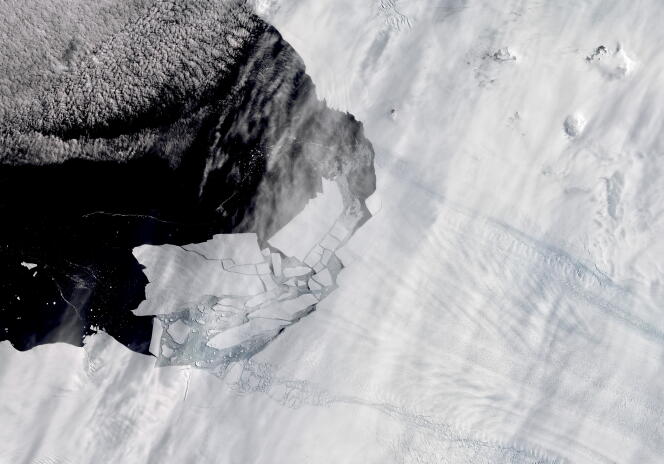


This is the data from the ends of the earth. And perhaps the first signs of a new era. On September 10, at the end of the austral winter in the southern hemisphere, the Antarctic ice pack reached its annual maximum. On that day, satellites measured only 16.96 million square kilometers. This was the smallest area ever recorded, almost two million square kilometers less than the average for 2011-2020. A continuing trend.
In February, at the end of summer in the Southern Hemisphere, the sea ice around the South Pole had melted significantly, reaching its historic minimum of 1.792 million square kilometers. "There is growing evidence that the Antarctic sea ice system has entered a new regime, featuring a much stronger influence of warm ocean waters," analyzed the US National Snow and Ice Data Center in its publication dated October 4.
A study published on Thursday, October 12, in the journal Science Advances was equally alarming. Using satellites, researchers from the University of Leeds examined 162 ice shelves surrounding Antarctica. These ice shelves, which form a continuum of the continent's ice cap, are key locations, acting as a plug between the glaciers and the sea. According to the authors, 71 of these shelves, notably those located to the west of the continent (Getz Barrier, Pine Island Glacier), saw their volume decrease between 1997 and 2021. The stability or growth of those to the east has not compensated for this loss, resulting in a net discharge of 7,500 billion tonnes of meltwater into the oceans over this period. The study says that the loss of mass is due to both the thinning of the base and the retreat of the tip of these platforms.
Are these new findings indicative of the influence of human-induced global warming, or the beginning of a natural cyclic shift? For many years, Antarctica has been an enigma. Whereas the Arctic is warming two to three times faster than the rest of the world, and the North Pole ice pack is worrying all scientists, the South Pole area appeared to be reacting differently. The ice surrounding it continued to expand, reaching a very high level in 2016. It was as if the sequence of great oceanic depressions and currents – the Southern Annular Mode – that encircles the white continent was helping to isolate these remote territories a little more.
"For a long time, we had not observed the effects of global warming in concrete terms," summarized Mathieu Casado, a paleoclimatologist at France's Climate and Environment Sciences Laboratory (LSCE), author of a study published on September 7 in the journal Nature Climate Change, which confirms that warming on the southern continent is 20% to 50% greater than predicted. "But we also knew, according to palaeoclimatological data, that the deglaciation of the two poles does not necessarily take place at the same time, raising major questions about the distribution of energy from the equator to the north and south of the globe."
You have 59.89% of this article left to read. The rest is for subscribers only.
